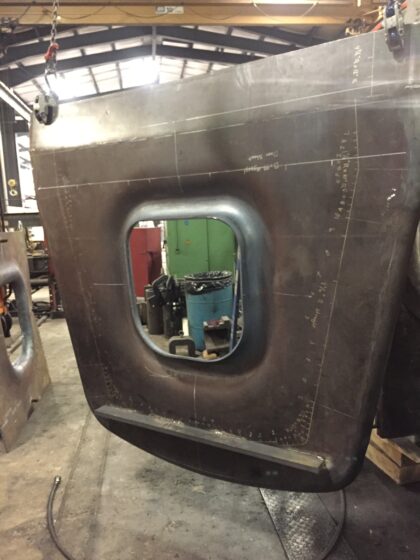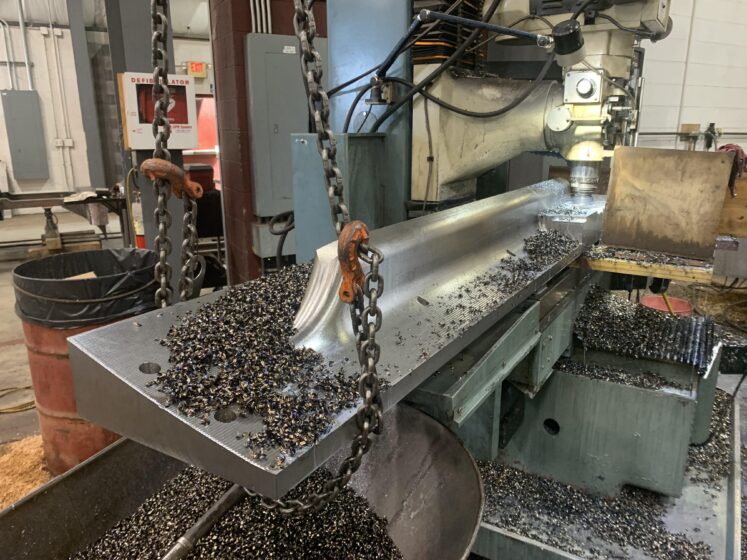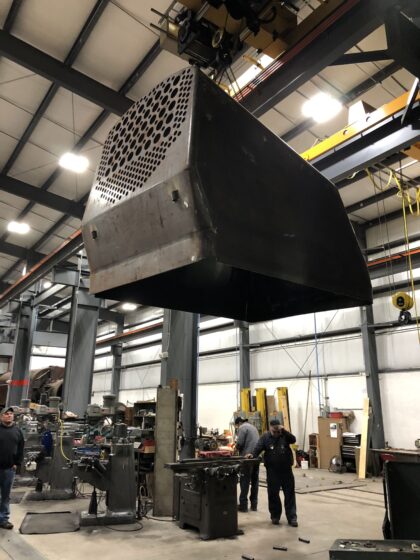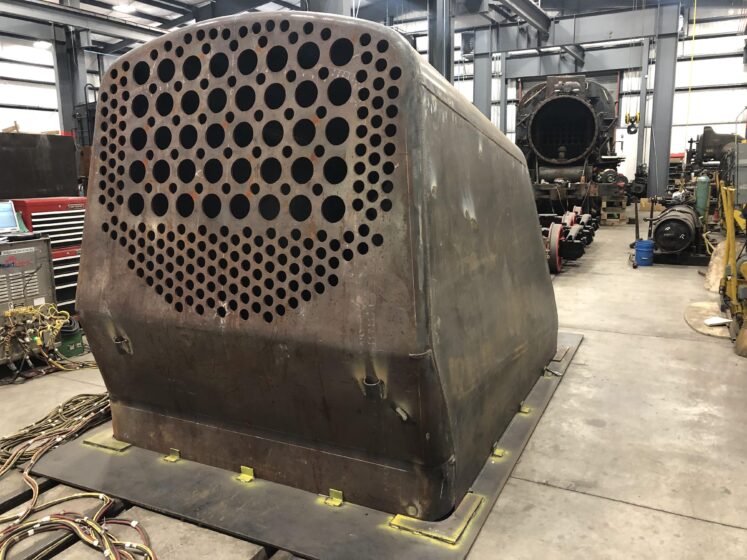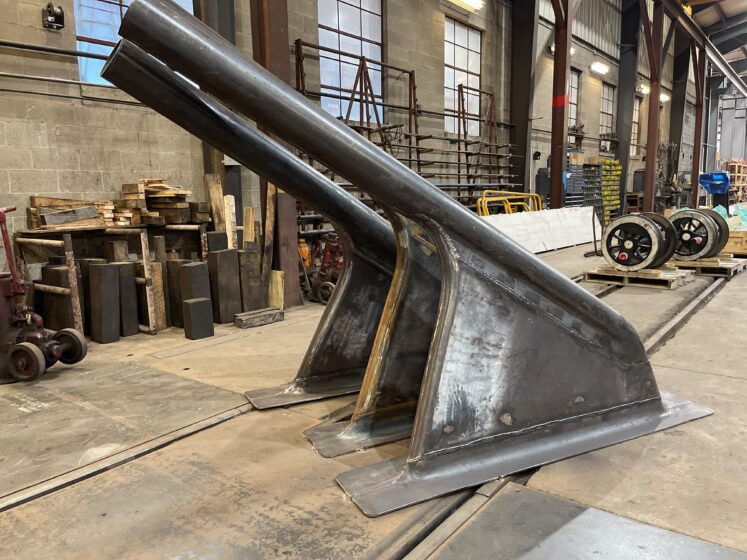Preserving Historic Locomotive – Boston and Maine 3713
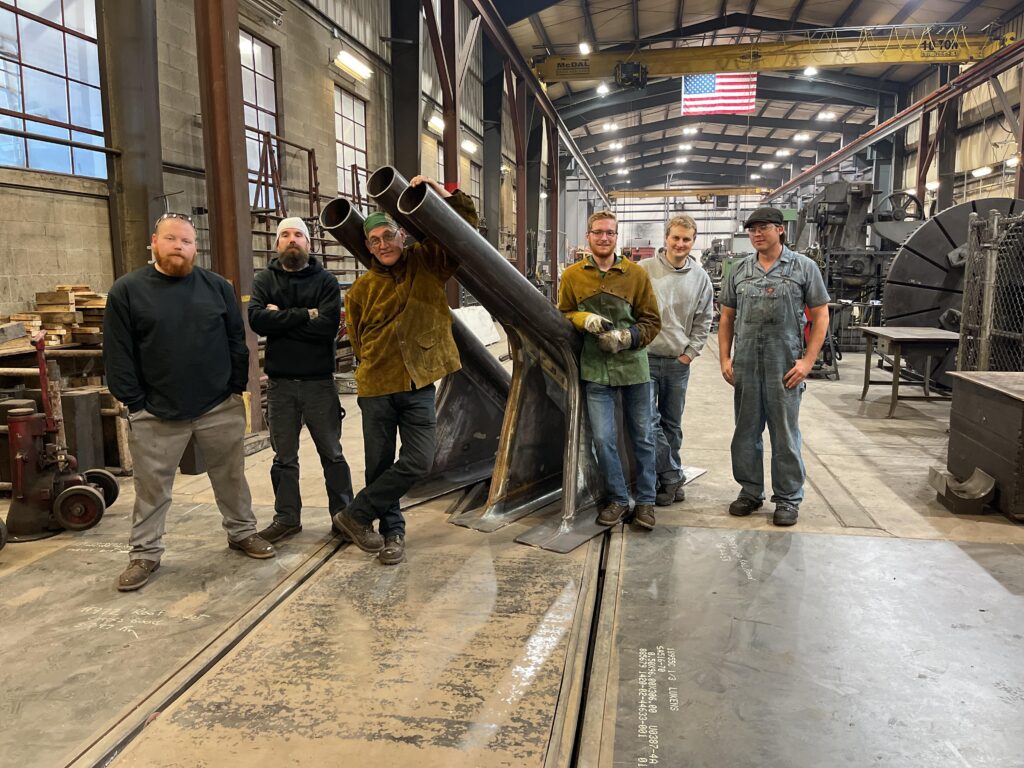
Helping maintain a piece of history for future generations.
When Steamtown National Historic Site decided to restore Locomotive Boston And Maine 3713, named The Constitution, to its former glory, they turned to the expert staff at Strasburg Rail Road Mechanical Services to design and construct a firebox, a vital component for the engine. They later came back and asked for a set of three thermic syphons—parts that are complex and have rarely been made since the steam era.
The Origins of Locomotive No. 3713
The locomotive was built in December 1934 by the Lima Locomotive Works for the Boston and Maine Railroad.
When the railroad took delivery of its second order of Pacific-type passenger locomotives from Lima Locomotive Works in 1937, it sponsored a contest among New England schoolchildren in communities along the railroad to name the engines.
The Boston and Maine Railroad promised to paint the names on the sides of the locomotive and would attach a plate with the name of the student who suggested the name, as well as the name of their school.
The contest elicited more than 10,000 names for the engines. A student at Lynn’s Eastern High School suggested the winning name for No. 3713: The Constitution.
The Constitution served as a troop transport in World War II and was retired in 1956.
After it was retired, the railroad worked with railroad preservationist F. Nelson Blount to save The Constitution from the scrappers and preserve it as an artifact of the steam age. It was moved to Steamtown NHS in 1984.
Technical Details:
- Whyte System Type: 4-6-2 Pacific
- Class: P-4a, Series 3710-3714
- Builder’s Number: 7625
- Cylinders (diameter x stroke in inches): 23 x 28
- Boiler Pressure (in lbs. per square inch): 260
- Diameter of Drive Wheels (in inches): 80
- Tractive Effort (in lbs.): 40,900; with booster, 52,800
- Coal (in tons): 18
- Water (in gallons): 12,000
- Weight on Drivers (in lbs.): 209,800
Getting Locomotive No. 3713 Back On Track
In 2018, Strasburg Rail Road was awarded the contract to build the new firebox. Over the next several years and two separate contracts, we constructed a completely new firebox and three new thermic syphons that will eventually be installed in the boiler of the locomotive as the project progresses.
What Was Our Process?
The firebox required new drawings and engineering to change it from a riveted construction design specified in the original plans to a welded construction in the replacement. Construction involved laying out and flanging the rear flue sheet and door sheet, creating accurately bent side sheets and crown sheets, and forming a door hole ring. Then the sheets were accurately fitted together and welded into a single unit.
The syphons involved similar steps including flanging bodies and funnel top, forming the bottom and tubular section in one piece, fitting them up, and welding them together.
Challenges & Results
The firebox had to be built to accurate dimensions to fit correctly inside the existing boiler shell. The door sheet featured a unique, patented door hole design that was not easily replicated with the equipment normally used in our shop for boiler sheet production.
We designed, and built, special forms and tooling for this project. We also repurposed our 600-ton wheel press to use as a stamping press and stamped the door hole in two stages.
The syphons also required special tooling and wheel press to form the components. Very few syphons have been built since the end of regular commercial use of steam locomotives in the 1950s.
They would have originally been constructed using machinery and specialized tooling that would have been cost-prohibitive to acquire or manufacture for such a small order. So we had to develop a method that would be cost-effective to produce only a small quantity but not sacrifice quality.
Strasburg Rail Road is proud to help preserve railroading history and artifacts. Without expert care, these locomotives would be lost to history.
Our team has decades of experience in steam locomotive restoration, maintenance, repair, and construction. Contact us today for help on your restoration project.

